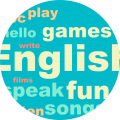| Level | Educational Institution | Specialty | Graduation | Certified |
|---|---|---|---|---|
| Seminar/Training | Αθηναϊκό Ωδείο | Χορωδια | 2017 | |
| Bachelor | Aristotle University of Thessaloniki | Physicist | 2017 | |
| Master | ΑΠΘ | Χημικος | 2010 | |
| Other | Framingham State University | Teaching License | 1993 | |
| Master | Framingham State University | English Literature | 1991 | |
| PhD | Universita degli Studi | Lingua Italiana | ||
| Bachelor | Russian State University for the Humanitites | Cultural Studies | ||
| Seminar/Training | Russain State University | Russian as a Foreighn Language | ||
| Bachelor | Φιλοσοφική Σχολή | Γερμανική Γλώσσα και Φιλολογία | ||
| Bachelor | Ma Chung University | English Literature | ||
| Certification | ΕΚΠΑ | ΙΤΑΛΙΚΗ ΚΑΙ ΙΣΠΑΝΙΚΗ ΦΙΛΟΛΟΓΙΑ | ||
| Bachelor | Egerton University | Languages and Science | 2025 | |
| Master | University of Birstol | Psychology of Education | 2017 | |
| Master | Μοσχοβιτικο Κρατικο Πανεπιστημιο | Καθηγητρια ρωσικης γλωσσας | 2007 | |
| PhD | ΕΚΠΑ | ΦΙΛΟΛΟΓΟΣ | 2004 | |
| Seminar/Training | Hellenic Open University | Integrated Teaching Methodology | ||
| Bachelor | National and Kapodistrian University of Athens | Philosophy, Pedagogy and Psychology | 2014 | |
| Certification | telc GmbH | Verified Examiner | ||
| Certification | National and Kapodistrian University of Athens | Special Education / Dyslexia | 2013 | |
| Master | TU Dresden | German Language & Culture | ||
| Master | Aristotle University of Thessaloniki | Civil Engineering | ||
| Bachelor | University of Athens | German Language & Literature | ||
| Master | Goethe Institut München | DaF Deutsch als Fremdsprache |
Special courses in Italian are taught by a graduate of Italian Language and Literature (Università di Lettere) in Perugia-Italia. Experience in tutorials and especially at all levels! I also do translations.
Special rates in groups and even less if you choose to do the lessons on my own or via skype! More info via E-Mail form! Very good prices !!
Modern and effective ways of teaching, audiovisual, distance learning (skype, viber, social media ecc.)
18 years in private scools and group of students .
Wider audience
Personal notes
Tutorial Notes
Use of extracurricular aids
Group teaching
Preparation for Nationwide Exams
Work out
The first strategy would just be to talk to the students. The purpose of this would be to open the lines of communication between you and the students. A teacher is not going to learn anything from their students if the student does not want to communicate with the teacher. Simple verbal communication is a non threatening way. Talking to your students can range from a conversation about their dog to something as simple as asking how their day is going. By talking the students personality starts to show through in the way they express themselves verbally and nonverbally. When a student responds to you verbally there are also nonverbal cues the teacher can take, like body language. Is the student open and using hand gestures, confident in what they say, or maybe uncomfortable speaking out loud. Based on just talking to the students the teacher can decide various teaching strategies to help his/her students. This is also a two way street if the student shares something about themselves the teacher should share a little bit about themselves in order to establish a connection. An example I found on-line was a teacher that had 6th graders that were scared to be in a new school with the older 8th graders. She told a funny story about her dog that is afraid of everything. This alleviated some of the students’ apprehension and established a connection with the teacher making her human also (Pam Chandler). As a teacher I think it is important to establish a comfortable verbal rapport with the students so they feel comfortable expressing their concerns to me as well as participate in class.
Observing your students is another strategy for understanding students. The teacher can observe how the students interact with each other. This is important because the teacher can see where the divides are between cliques or who does not get along with who. Observing behavior is also a way to survey student’s personalities. The more outgoing students will probably be more boisterous; the introvert students will probably be quieter. Observing how the students interact can help a teacher plan a seating chart. For example my cooperating teacher creates seating charts by reading level and observed behavior. She knows who gets along with whom. You do not want people that do not get along sitting next to each other or too many extroverts sitting together because they might feed off each others energy and cause a distraction. I believe observed behavior is also important to understanding students.
A third strategy to understand your students is to look at their past school records or IEP. This helps the teacher project what the academic performance might be for the class. A teacher can see what subjects his/her individual students need help with. For example if a student received an A in math, but a lower grade in English, the teacher could guess that the student is left brain dominant, good at logic but needs help with reading and writing. Looking at the IEP helps the teacher understand what help the student might need and what is currently being done to help the special needs student. Looking at the student’s academic records helps the teacher understand what they may or may not need help with academically. You not only need to understand the student’s behavior, interests, and motivation, but understand them academically to be able to help them understand the subjects. My apprenticeship teacher at the beginning of the year looks at the files of her students; she marks in the grade books the students’ reading level so she knows who might need extra help. She also reads the IEPs so she understands what type of disability a student might have and what she should do about it. This is important because there might be a pattern of what worked academically and what did not in past student performance.
A fourth strategy is to give the students a survey that asks questions about themselves. A teacher could had it out the first or second week of school in order to see what the students are interested in, their background, and other things that you could incorporate into lessons. This is also a way for students that are not real vocal to express who they are in writing. A survey is also a hard copy that you can refer back to as opposed to talking or observation. A survey can also tell you what the student’s motivation is or their interests that you can bring into a lesson so they get excited about the lesson too. My cooperating teacher uses surveys in order to get a consensus from her class on issues concerning the class. For example recently a parent complained that his child was getting too much homework. She usually gives 15 minutes of social studies a night and she thought the homework she was giving fit this time frame. She took a survey and asked each student to right down how much time they spend at night on social studies and a total on homework. The majority responded 15 minutes. By giving a survey it shows that as a teacher you take the time to create something tangible to get to know your students.
A fifth strategy to know your students is to get involved in extracurricular activities. Most students that participate in after school activities do so because they are interested in the topic, whether it is kick ball or craft time. You can lead the student in an activity that they like rather than a subject that they have no interest in. Sometimes when a teacher leads students in a fun activity the teacher become more human, not just a grown up that stands in front of the class. It makes teacher more approachable. For example, at Ordean there are various student intramural teams that meet at lunch and after school, but the teachers also have an intramural team that plays against the students. The students love it because they get to do something fun with their teachers, and possibly the fun subject can be reflected back to something done in the classroom. Teachers can be role models for students outside of the classroom.
A sixth strategy to get to know your students is to have a bulletin board in the classroom that features a student of the week. Each week a different student gets to bring in pictures as well as a list of their five favorite things and three things they want to do in the future. The purpose of this is that each student can feel special for the week, and at the same time the teacher and the students can get to know the student better. I think it is good that students can bring things into the classrooms that represent themselves. It is also another form of expression. The student is not describing themselves verbally or through writing, but through visuals.
A seventh strategy to understand your students is icebreaker games on the first or second day of class. The purpose of this is you get to know your students, your students get to know you, and your students get to know each other. If you get to know your students chances are that you will understand the better. Also if students get to know you and each other they might feel more comfortable in the classroom and subsequently more willing to participate. Also it is harder for a student to act up if they know the teacher has an interest in them rather than just another face sitting in the back row. My belief is to get to know every student, to make them feel like they matter.
- I teach people in Groups
- I can provide my own notes for the course













